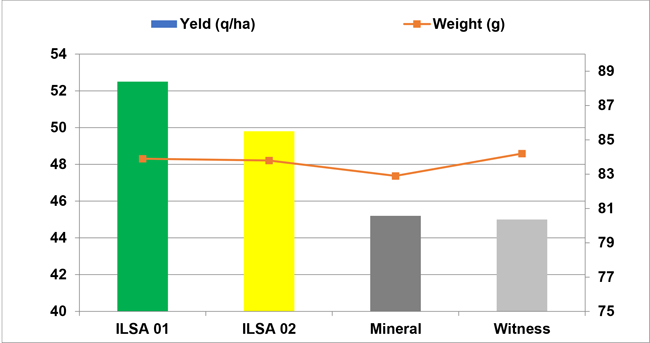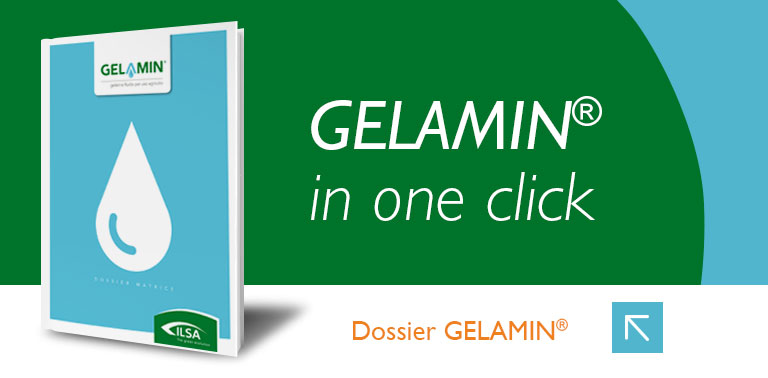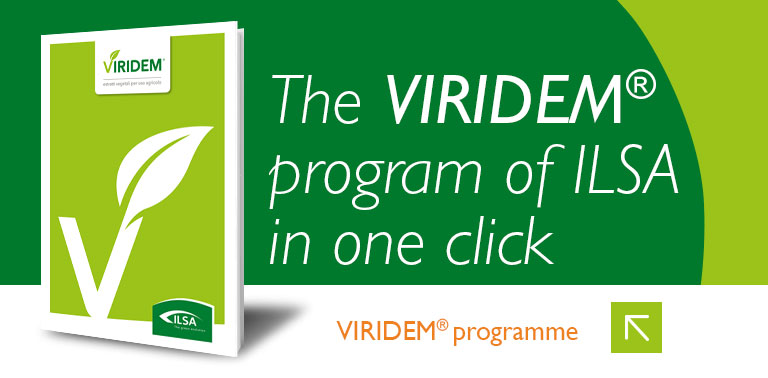Editorials
Autumn-winter cereals: yield and quality, even at half dosage
12/09/2019
(Arzignano, Italy). ILSA has perfected a new fertilization strategy that, even at half dosage, is able to counteract fluctuating climatic trends and guarantee yields.
The strategy was confirmed by a recent test on durum wheat, Claudio variety, in collaboration with the ALSIA Metapotum Agrobios Test Center.
In the test, ILSA has proposed two different strategies for traditional farming, which have been compared to the “mineral” practice of the area. Products based on Agrogel® and Gelamin®, the solid and liquid nitrogenous organic matrices of exclusive ILSA production, were used.
The results were favourable, both in terms of final yield per hectare and specific weight of the grain (an aspect that is particularly delicate due to the high rainfall that lowered the average value in many areas in the period considered), to the ILSA thesis. The application of ILSA organo-mineral fertilizers, in fact, allowed to reach higher values compared to the practice with mineral fertilizers, even when the comparison was made with the ILSA thesis with half nitrogen dosage.
In chart n.1, the results of the ILSA 02 thesis have been noted, where the complete strategy was applied with units per hectare of nitrogen reduced to 53 compared to 100 units of the mineral thesis. Despite the lower potential nitrogen units, the yield was about 5 quintals per hectare higher than the mineral thesis, indicating greater efficiency, evaluated in areas where the practice involves low nitrogen dosages.
Over 50 official tests have been carried out in the last 5 years by the company on wheat, which add up to the countless positive feedback from the cereal farmers. Additionally, for organic farming, where the company is the market leader on account of its innovative natural biostimulants.
These are not easy years for the Italian cereal farmers – prices are low, cold and rainy springs, fluctuating qualitative parameters at harvest time. Today, it is therefore possible for cereal farmers to invest intelligently in high-efficiency products that can be used in lower doses, which ensures savings along with the security of a good harvest even when the weather is bad.

Graph 1: Results of the test on durum wheat (var. Claudio) carried out in Lavello (PZ). The ILSA 02 thesis
obtained a higher yield of 5 quintals per hectare compared to the mineral thesis, although the nitrogen
units for this strategy were reduced to 53 compared to 100 in the Thesis n.1 and the mineral
| Phases | ILSA Thesis 01 | ILSA Thesis 02 | Mineral Thesis | Witness |
|---|---|---|---|---|
| Pre-sowing | / | Azoslow NP 200 kg/ha |
Ammonium Sulphate 150 kg/ha |
/ |
| Beginning of stem-elongation | Azoslow 344,8 kg/ha |
Azoslow 100 kg/ha |
Ammonium Nitrate 269 kg/ha |
/ |
| Foliar applications | ||||
| Beginning of stem-elongation, 2nd node detectable | / | Splinter New 3 kg/ha |
/ | / |
| Flowering | / | Splinter New 3 kg/ha |
/ | / |
| Unit N / ha | 100 | 53,5 | 100 | / |
Table 2: Comprehensive test protocol





.png)
















